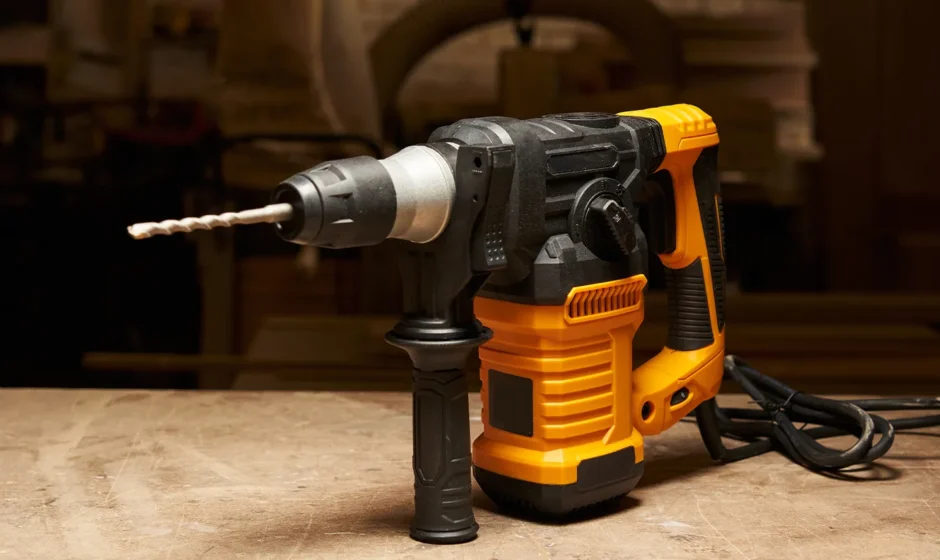A hammer drill is a basic tool that can be used for both home repairs and large construction projects. They use it to drill into brick, concrete, metal, and wood, mix mortars, demolish or chip walls, and dismantle old finishing coatings. We’ll tell you what types of hammer drills there are and which tool to choose for home and work.
Criteria of choice
The choice of a rotary hammer depends on how complex the types of work you plan to do and how often. The performance of the tool is influenced by the type of power supply, power, impact force, and maximum speed. Additionally, when choosing a hammer drill, pay attention to the type of chuck, engine location, operating modes, and weight.
Egon Zolkin
Conventionally, hammer drills can be divided into household and professional. The degree of professionalism depends on the manufacturer and resource of the tool, that is, its durability. The resource is affected by the material of the parts from which the tool is made, and the know-how of the manufacturer. Professional hammer drills are more expensive and are made by well-known construction brands.
Power type
Depending on the type of power supply, rotary hammers are either battery-powered (mobile) or mains-powered. Rechargeable ones operate from a rechargeable battery, while the main ones need to be powered from a 220 V outlet.
Rechargeable
Cordless drills are suitable in situations where there is no source of electricity nearby or it is impossible to reach an outlet. As a rule, the power and impact force of such models is less than that of network ones, and their operating time is limited by the battery capacity. Such tools are not designed for a large amount of work. The maximum battery life at an average load is 1-1.5 hours.

If you are going to buy a cordless hammer drill, choose models that have:
- there is fast charging
- a brushless motor is installed – it consumes more power economically and is more efficient
Network
Corded hammer drills have all the capabilities of cordless hammer drills, and their operating time is not limited by battery capacity. As a rule, these are powerful models with high impact force and high torque. The main disadvantage of such tools is the need to have a power source nearby.
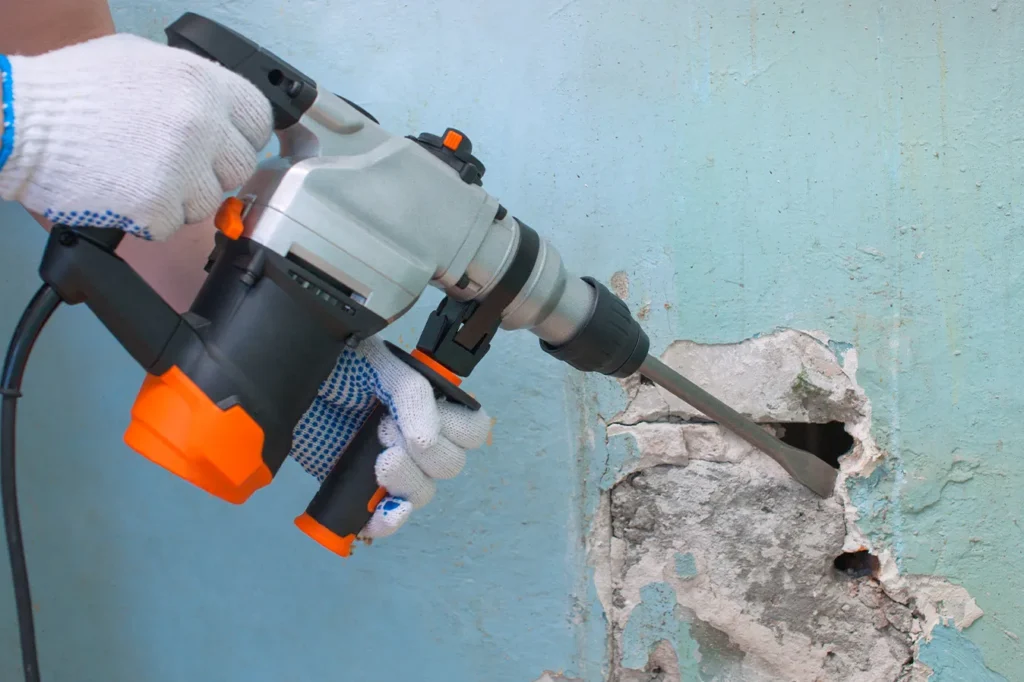
Chuck type
Depending on the design, the rotary hammer can be equipped with an SDS plus or SDS max chuck. It is needed to change attachments.
SDS plus
SDS plus is the most common type of chuck; it is found on both corded and cordless rotary hammers. It is designed for low and medium-power models, sufficient for most home repairs: knocking off tiles or cutting a channel for wires. Rotary hammers with the SDS plus chuck are capable of working with drill bits with a diameter of 4 to 24 mm and a length of up to 950 mm and drill bits with a diameter of up to 100 mm.
SDS max
Powerful rotary hammers are equipped with SDS max chucks. Such tools are used in capital construction when it is necessary to break through a load-bearing wall or punch holes for sewer pipes. SDS max rotary hammers can be equipped with drill bits with a diameter of 12 to 45 mm and a maximum length of up to 1,200 mm, drill bits with a diameter of up to 150 mm, or breakout drills with a diameter of up to 80 mm and a length of 990 mm. But it won’t be possible to install a drill with a smaller diameter: for small holes, you will have to use a machine with an SDS plus chuck.
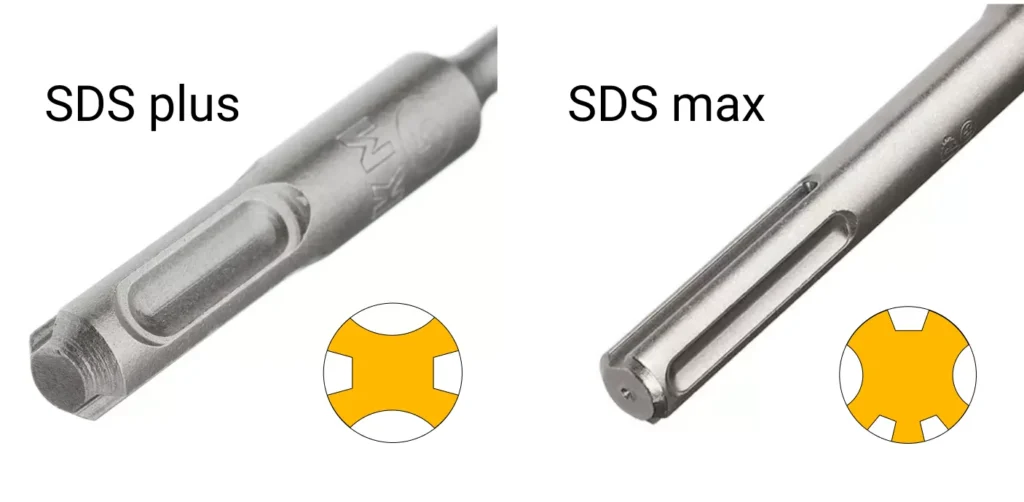
Engine location
The location of the motor in a rotary hammer can be horizontal or vertical. Horizontal engine position is for low-power tools. These models are suitable for precision work such as drilling or chipping old tiles.

Vertical models are more compact because the engine is located next to the handles, and are suitable for working in tight spaces. The vertical configuration is more common in powerful models: with a horizontal arrangement, holding the tool will be inconvenient due to the large weight of the engine.
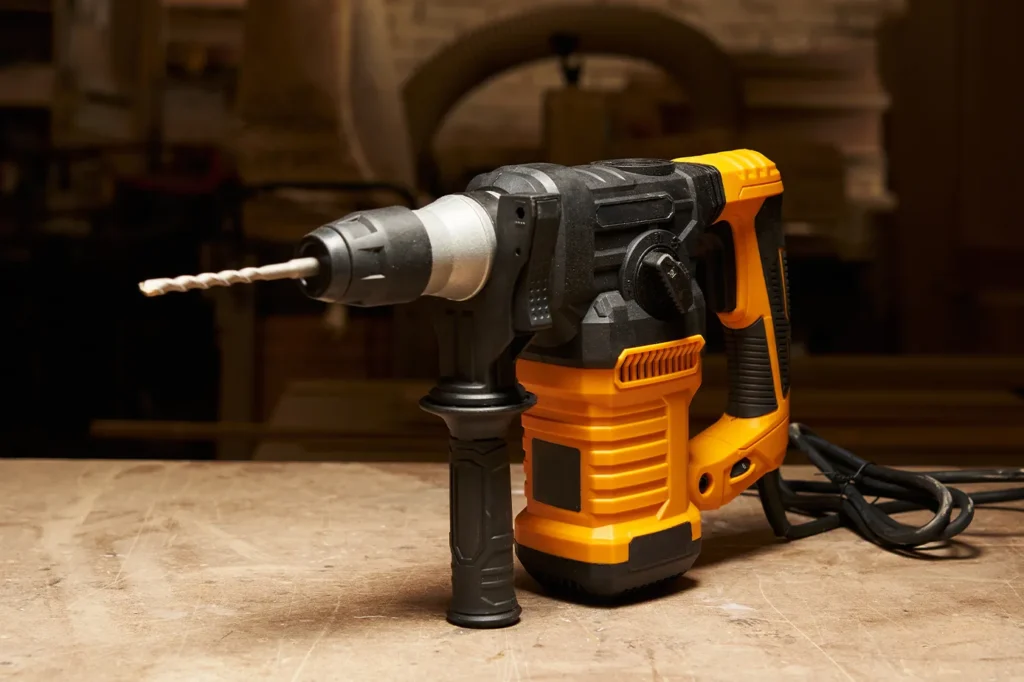
Power
One of the key indicators of a rotary hammer is its power. The power of light (up to 4 kg) and medium (up to 6 kg) models with an SDS plus cartridge is from 400 to 1,100–1,200 W. Medium and heavy hammer drills with SDS max chuck have power from 1,000 to 2,000 W.
If you need a hammer drill to drill holes for a cornice or shelf, choose models with a power of 500–800 W. This will be enough to work with concrete, brick, and foam blocks.
To lay grooves under pipes or wiring, you will need a more powerful model – up to 1,000 W. For heavy-duty work (breaking through walls or large holes, dismantling brick or concrete), choose models with a power of 1,200 to 2,000 W.
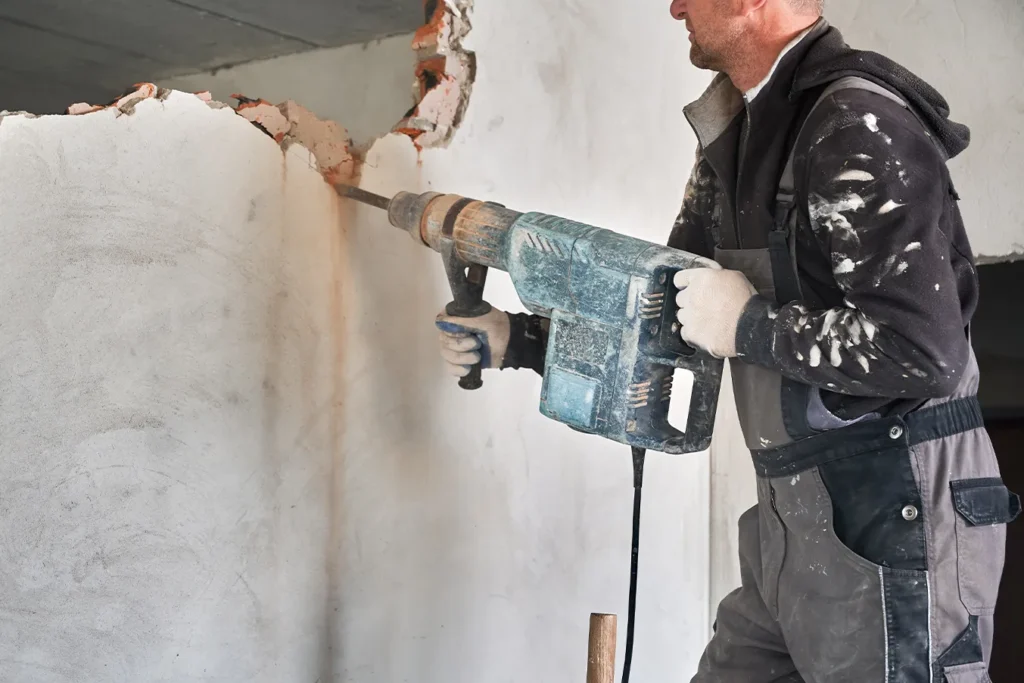
To break through walls, you need a model with a power of over 1,200 W.
Impact force
The force of the blow affects the speed of work and the diameter of the maximum hole that can be made: the greater the force, the larger the hole. Impact force is measured in joules and on average correlates with the power of the tool as follows:
- a power of about 600 W will give a force of 1.5 J
- 700−800 W – 2−2.5 J
- 900 W – 3.5 J
- 1 200−1 500 W – 5−15 J
- 1,500 W and above – from 10 J
For some models, the ratio of impact force and power may be different, so when choosing a rotary hammer, focus on average values. If the power is high and the impact force is much less than average, most likely the hammer will not be able to show the declared performance.
For most home repairs, a tool with an impact force of up to 4.5 J will be suitable. An impact force of 5 J or higher is needed to dismantle walls and drill through load-bearing concrete walls.
Maximum beat frequency
The higher the impact frequency, the faster the hammer drills the hole. This characteristic is inversely proportional to the impact force: if the impact force is high, then the frequency of impacts will be low, and vice versa. For rotary hammers with impact energy up to 5 J, the frequency is 3,500 beats/min and higher. Powerful instruments with impact energy over 5 J do not need high frequency, so they have it at the level of 2,000–3,600 beats/min.
Weight
The weight of the hammer largely determines what tasks the tool can handle:
- lightweight models (up to 4 kg) are designed for small amounts of work
- medium models (up to 8 kg) are suitable for most finishing or electrical work at home
- heavy hammer drills (more than 8 kg) are most often used on construction sites: such tools have high power and are designed for dismantling, major repairs, or laying communications from scratch
Operating modes
Most SDS plus rotary hammers have three operating modes: drilling, hammer drilling, and chiseling. Three-mode models are suitable for drills, drills with impact, and chisels for rotary hammers. Such tools are useful for drilling, dismantling structures, chopping materials, stirring building mixtures, and removing old coatings.
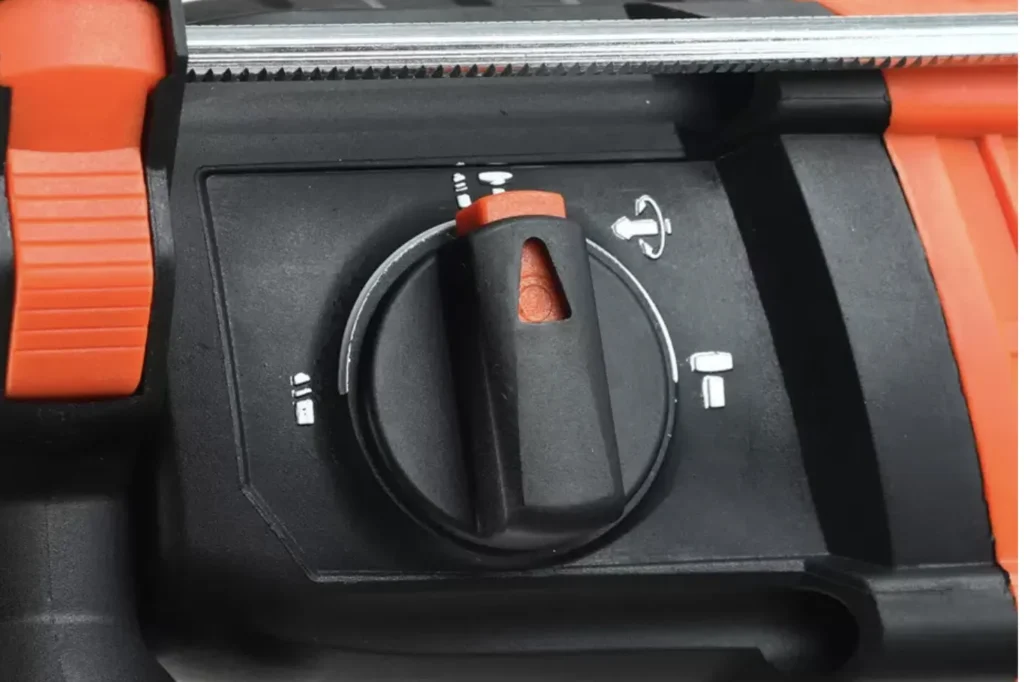
SDS max rotary hammers have only two modes: hammer drilling and chiseling. There is no drilling function in heavy construction hammer drills – these machines are designed for dismantling, and they do not need accuracy.
Additional functions
Almost all medium and heavy hammer drill models have additional functions for comfortable work:
- smooth start for comfortable work with the tool so that it does not get torn out of your hands when turned on
- overheat protection – extends tool life
- anti-vibration system (especially important for heavy hammer drills) – smoothes out vibrations from work, which have a negative impact on the joints of the hands
- reverse, or reverse rotation, allows you to remove a drill stuck in the wall
- drilling depth limiter – useful when you need to make several holes of the same depth
- dust collection function due to built-in or mounted dust collector
- additional handle – it makes it easier to hold a heavy hammer drill
- work area lighting
Summary
The best hammer drill for most household tasks is a light or medium model with up to 1,100 watts. The heavier and more powerful the hammer drill, the more complex work it can perform. To break through a wall, you will need a tool with a power of 1,500 to 2,000 watts.

